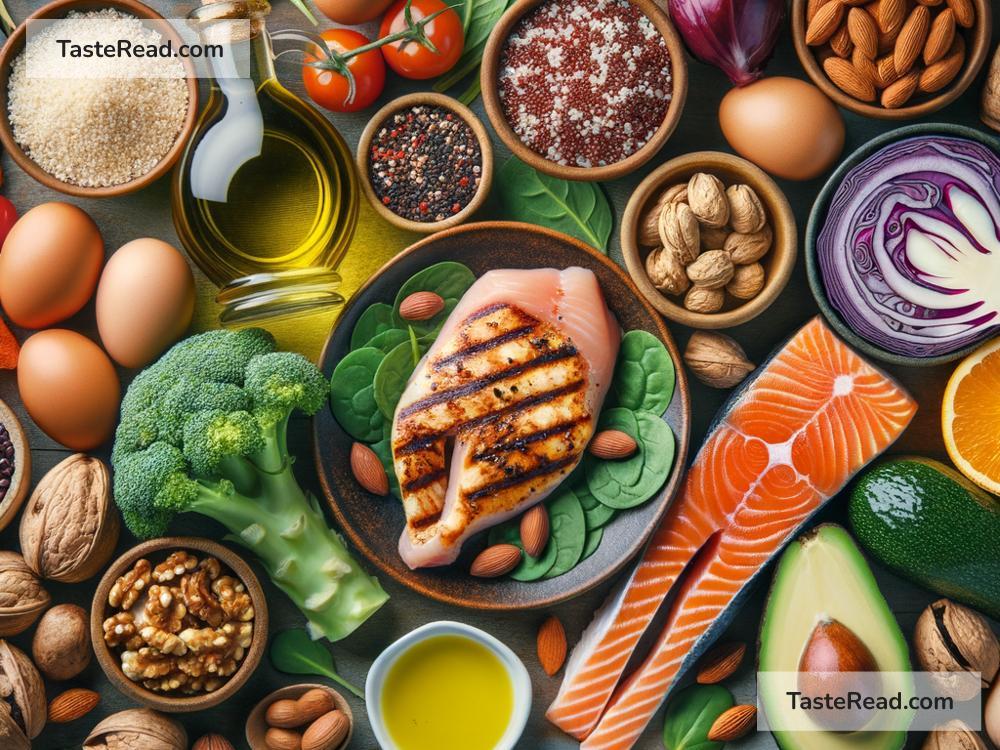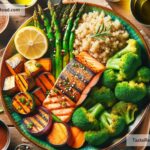Understanding Macronutrients: Proteins, Carbs, and Fats
When it comes to healthy eating, “macronutrients” is a term you’ve probably heard before, but you may not fully understand. It sounds fancy, but it simply refers to the nutrients our bodies need in large amounts to function properly — proteins, carbohydrates (carbs), and fats. These macronutrients give us energy and support essential bodily processes. Let’s break them down into simple terms so you can better understand their importance — and start making smarter food choices.
What Are Macronutrients?
Macronutrients are the building blocks of your diet. They’re called “macro” because your body requires them in large quantities compared to “micronutrients” like vitamins and minerals, which are needed in smaller amounts. Proteins, carbs, and fats each play unique and essential roles in keeping your body running. If you’ve ever counted calories or read food labels, those numbers are connected to macronutrients, which provide the energy your body uses in the form of calories.
- Proteins: 1 gram provides 4 calories.
- Carbs: 1 gram provides 4 calories.
- Fats: 1 gram provides 9 calories.
Understanding the role of each macronutrient can make it easier to build a balanced diet that keeps you feeling good.
Protein: The Building Block of Your Body
Proteins are like the construction workers in your body. They repair and build tissues, muscles, skin, and even your hair and nails. Proteins are made up of smaller units called amino acids, which your body uses to create hormones, enzymes, and immune-system cells. Without enough protein in your diet, your body wouldn’t function properly.
Where Do You Get Protein?
Protein-rich foods include:
– Meat: Chicken, beef, turkey, pork.
– Fish: Salmon, tuna, cod.
– Eggs
– Dairy: Milk, yogurt, cheese.
– Plant-based options: Beans, lentils, tofu, tempeh, nuts, and seeds.
For someone who chooses a vegetarian or vegan lifestyle, beans, lentils, and soy-based foods (like tofu) are great sources of plant protein.
How Much Protein Do You Need?
Protein needs vary depending on your age, gender, and activity level. Adults generally need about 46-56 grams per day, but if you’re active or trying to build muscle, you may need more. A good rule of thumb is to include a portion of protein in every meal to keep your body fueled.
Carbohydrates: Your Body’s Energy Source
Carbohydrates, or carbs, are your body’s main energy source. When you eat carbs, your body breaks them down into glucose (sugar), which fuels your cells and keeps you energized. Carbs often get a bad reputation in trendy diets, but they’re actually an important part of a healthy diet — as long as you choose the right kinds.
Types of Carbs: Simple vs. Complex
- Simple carbs: Found in sugary foods like candy, soda, and baked goods. They give you fast energy but can lead to a quick crash because they’re digested quickly.
- Complex carbs: Found in whole grains, vegetables, fruits, and legumes. They provide longer-lasting energy because they’re digested more slowly and contain fiber, which helps digestion and keeps you full.
Where Do You Get Carbs?
Healthy carb sources include:
– Whole grains: Brown rice, quinoa, whole-wheat bread.
– Fruits: Apples, bananas, berries, oranges.
– Vegetables: Sweet potatoes, broccoli, spinach, peas.
– Legumes: Chickpeas, lentils, black beans.
How Much Carbs Do You Need?
The amount of carbs you need depends on your activity level, but generally 45-65% of your daily calories should come from carbohydrates. The trick is focusing on whole, nutrient-dense carb sources rather than processed or sugary ones.
Fats: The Unsung Hero
Fats often get a bad reputation, but they’re critical to your health. Fats help your body absorb vitamins, produce hormones, and protect your organs. They also serve as a long-lasting energy source. However, the type of fat you eat matters a lot.
Types of Fats: Good vs. Bad
- Healthy fats:
- Unsaturated fats: Found in nuts, seeds, fish, avocados, and olive oil.
- Omega-3 fatty acids: Found in salmon, walnuts, and flaxseeds; great for brain and heart health.
- Less healthy fats:
- Saturated fats: Found in butter, cheese, and fatty cuts of meat; best enjoyed in moderation.
- Trans fats: Found in processed snacks and fried foods; try to avoid these entirely, as they’re linked to heart disease.
Where Do You Get Fats?
Healthy fat sources include:
– Nuts and seeds: Almonds, walnuts, chia seeds.
– Avocados
– Fish: Salmon, mackerel, sardines.
– Oils: Olive oil, coconut oil.
How Much Fat Do You Need?
Fats should make up about 20-35% of your daily calories. Remember: fats are calorie-dense, so it’s easy to overeat them if you’re not careful.
How to Balance Your Macronutrients
Now that you understand proteins, carbs, and fats, how can you balance them in your meals? Think of your plate as a pie chart:
– ¼ protein: Grilled chicken, tofu, or beans.
– ¼ carbs: Brown rice, quinoa, or sweet potato.
– ½ vegetables: Broccoli, spinach, or any colorful veggies.
– Add a healthy fat: A drizzle of olive oil or a slice of avocado.
This balanced approach will keep you energized, satisfied, and support overall health.
In Summary
Proteins, carbs, and fats may seem like complicated science, but they’re simply the essential nutrients your body needs to work. Protein builds and repairs, carbs provide energy, and fats support cell function and hormone production. By eating a variety of foods, focusing on healthy sources, and keeping portions balanced, you can make these macronutrients work for you — and feel great doing it!
Healthy eating isn’t about cutting carbs, fearing fats, or obsessing over protein; it’s about finding the right balance for your body’s needs. Next time you sit down for a meal, think about the role each macronutrient plays in keeping you healthy and energized. Small changes to your choices can lead to big long-term benefits!


